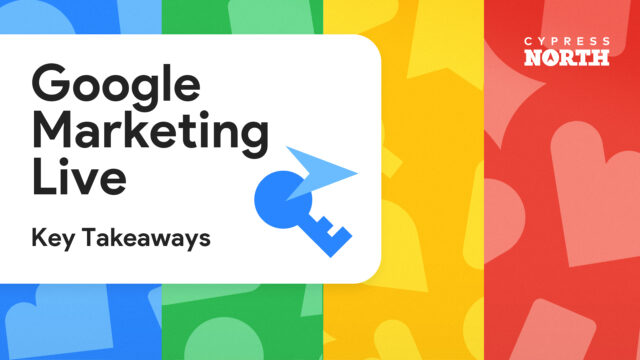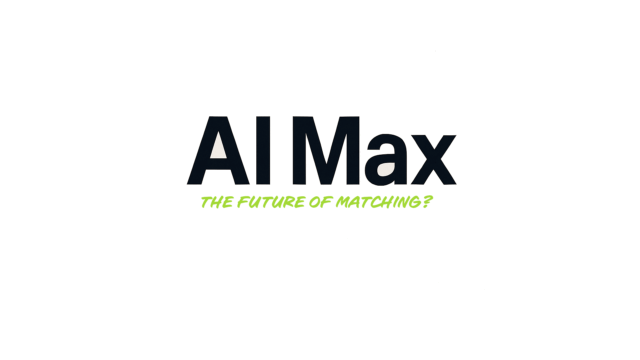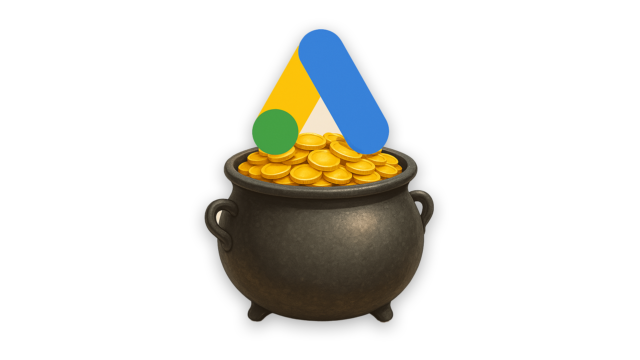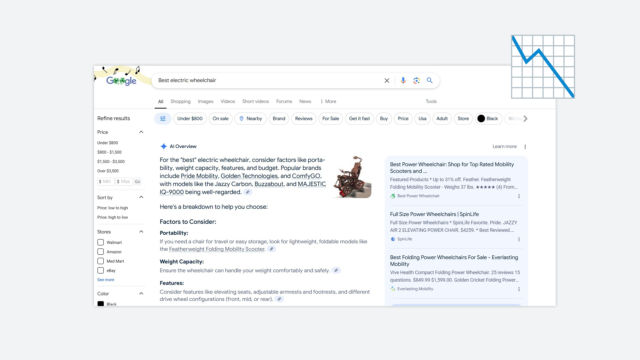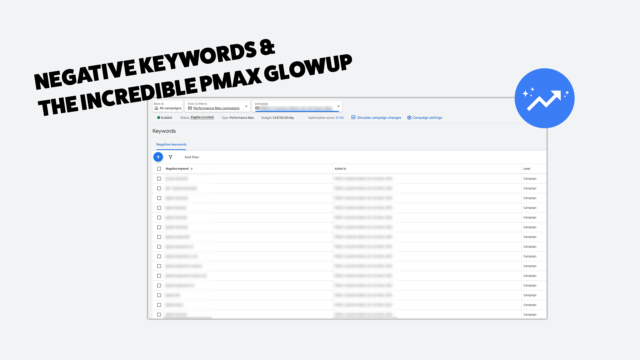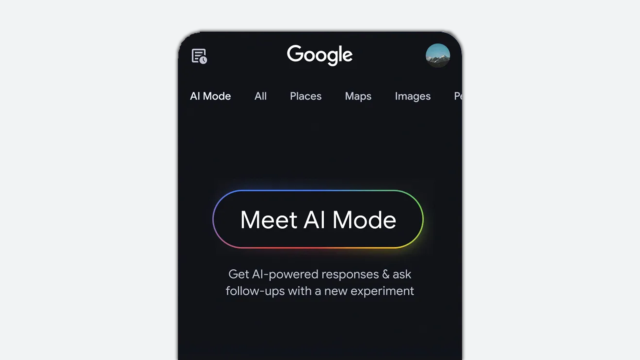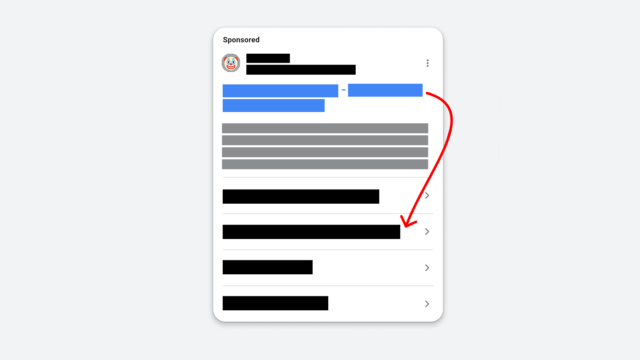Google Ads & Bidding Types: The Ultimate Source for Google Search Bidding

In this article, you’ll discover everything you need to know about bid strategies for Google Search: What they are, how they can be used, what to look out for, and how to optimize them.

Table Stakes: Conversions & Conversion Value
Before we begin, the most important part of any campaign is the conversions that you are looking to obtain. We here at Cypress North are performance marketers. This means that we are trying to drive the best possible performance for our clients, so please be aware of that bias. Our typical go-to bid strategies focus on cost per acquisition (CPA) or the Return On Ad Spend (ROAS) but will cover how you can use each bidding strategy based on your needs.
If you’re looking to set up a campaign, we strongly recommend that you think through what you would like your traffic to do once they arrive on your site and implement conversion tracking in order to see the events that unfold on your site. For the Smart bidding types (Maximize Conversions, +Target CPA, Maximize Conversion Value, +Target ROAS) this is a requirement.
So let’s get into the various bidding types that you can leverage within a Google ad search campaign:
Non-Smart Bidding

This is the oldest type of bidding, and is well… exactly what you think it might be. In this bid strategy, the advertiser provides a manual bid that they are willing to pay for a click from a keyword. Based on the auction system, you may or may not pay the full amount of the click, but you will not pay more than what your manual bid is.
Unlike Enhanced CPC (the newer, smarter option) Manual CPC won’t bid up or bid down based on whether or not Google thinks a conversion will happen, it simply looks at your bid and will adhere to it.
Most advertisers have moved on from this bidding strategy due to more modern solutions, like enhanced CPC, or smart bidding solutions.
Why It’s Good:
This type of bid won’t go over the CPC you provide for each keyword/ad group/campaign. This gives advertisers more control over how much each click may cost.
Why It’s Bad:
There’s no intelligence behind manual bidding, and you’ll be at a competitive disadvantage against your competitors who may be using enhanced CPC. Manual CPC leverages no Artificial Intelligence (AI) or Machine Learning (ML) to help you adjust for more success and instead will simply adhere to your bid.
Additionally, unlike Smart Bidding, advertisers need to regularly keep a keen eye on bids to make sure they aren’t too low or too high.
Who Should Use This Bid Type?
There aren’t any use cases for true manual CPC anymore unless you have catastrophic conversion issues. Most advertisers have moved on to adding intelligence to their bidding through eCPC or Smart Bidding. Even if you want more control over your click costs, the majority of advertisers we’ve spoken to still leverage the enhanced version in order to get a performance boost.
The only real use for this is if you aren’t tracking conversions in any way, shape, or form. Frankly, if that’s the case, you shouldn’t be advertising on Google to begin with.

I think of this as manual CPC spliced with a flair of Google’s intelligence to raise or lower your bids based on what the system thinks the result of a click could be.
In the past, there were limitations on how much Google could manipulate a bid, but those have been lifted and Google can now change the bids to be as high or low as they’d like. However, over the course of roughly a month, you should be able to look back and see that the average CPC is at or below your inputted CPCs, even with the fluctuations that occur.
Why It’s Good:
Fully automated campaigns can be tough for certain folks with major constraints. Things like very low budgets, expensive keywords, High CPA targets, or imperfect conversions may make true smart bidding tough sledding. eCPC will give you the control to keep your bids within a specific range to help keep you profitable.
Why It’s Bad:
This isn’t true Smart Bidding where Google can take control of your campaign to work to drive the best results. If you set your CPC too low, you may miss out on traffic. If you set your CPC too high, you may overspend. This is not smart, as defined by Google, and doesn’t offer the same flexibility and intelligence as a true Smart Bidding campaign.
Who Should Use This Bid Type?
If you aren’t seeing results with Smart Bidding (too high of CPCs, sky-high CPAs, etc.) switching to eCPC can help you spend what you want on the keywords you want. This should also only be utilized by those advertisers that are very active and can keep a diligent eye on performance as bids still need to be raised and lowered accordingly.

You may be thinking, “Why is something so smart sounding like Maximize Clicks in the non-smart bidding section, Greg?” I promise - there’s a reason.
The name Maximize Clicks may seem to be smart, but this bid type is most certainly not, nor is it included as a Smart Bidding option by Google.
Maximize Clicks does exactly what it says it will do: Attempt to drive the most clicks at the lowest CPC it can find within a given budget. That’s not a good thing for performance marketers who are looking for return. Most of what we see come through are bad matches, close variants, and the cheapest traffic that will match your terms. That’s the direction you’re giving this bid type: get the most clicks, not the best clicks.
Why It’s Good:
A short-term use that some advertisers use with Maximize Clicks is to kickstart a campaign before moving it to a Smart Bid-type flavor. If a campaign or account doesn’t have a sizeable amount of conversions already, you can use a Maximize Clicks bid strategy to help kickstart volume.
Note: This should only be done with specific match types (exact/phrase only) and should have a healthy amount of negative keywords in place and Google Search Partners removed. If set up with these restrictions, Maximize Clicks can help to drive traffic (and hopefully conversions) though there is no directive to drive any return with this bidding type.
Why It’s Bad:
This bid strategy will get the rattiest traffic imaginable from search. The instructions are simply to get as many clicks for the budget provided. Google can (and probably will) spend your daily budget each day, and can (and probably will) get as many clicks as possible.
If you have a low budget, you will force Google to work harder for those clicks and your CPC will decrease. However, if you have a high budget, you may see your CPC drastically inflate. Remember, the directive to Google is to get as much traffic as possible within a given budget - not to get the lowest possible CPCs. This means if you still have budget left at the end of the day, spending $50 on a click that is typically a $5 click still meets your parameters.
Think about it – we aren't including any performance metrics with this bidding. We’re just looking for search volume at the cheapest cost. While there are some ways to put intelligence in place (audiences, matching, etc.) most performance advertisers are looking for performance, not clicks. Performance doesn’t equal traffic, performance equals acquisition. Acquiring the lowest, most rotten fruit typically doesn’t end well.
Who Should Use This Bid Type?
As mentioned above, some advertisers use this to start bringing some conversions in the door and then make the switch to a Smart Bidding Campaign from a short-term perspective.
The long-term use for this type is really only if you have session metrics as a conversion. If that’s your goal, Google search shouldn’t be your go-to. There are many ways that you can find dirt-cheap traffic to attain simple audience metrics.

This is also not a Smart Bidding type, despite the sound of it. With Target Impression Share, you can target the following:
- Anywhere on the results page
- Top of the results page
- Absolute top of the results page
Much like Maximize Clicks, there is no conversion strategy with this bidding type. Google will simply raise your bids to hit your impression share goals. This is not a bidding strategy that we typically employ, but could make sense for those looking to protect their brand name or are looking to be relevant at all times (also using very close match types.)
Why It’s Good:
If you have a major budget - and major concerns over competitors poaching your brand terms - Target Impression Share can help you automatically show up where you desire to be seen.
This may, however, come at an increased click cost. But there are levers that can be pulled that will allow you to input a Max CPC so that you won’t go over a specific CPC threshold.
Why It’s Bad:
Target Impression Share bidding does not take conversions into account. Instead, it simply ensures that you are seen where you want to be seen in the SERPs. This does not have a performance angle to it, other than “show me here.” When it comes to conversions, this will likely be more inefficient than Smart Bidding or eCPC, even with your branded terms.
Who Should Use This Bid Type?
If you are employed by one of those evil creatures that state, “But we need to be at the top of the SERPs,” this may be a bidding type for you. Brand protection is the typical implementation on where we see Target Impression Share, but remember that you won’t have any performance metrics checked off other than your Impression Share metrics.
Smart Bidding

With this bid type, you are instructing Google to spend your budget with the goal of driving the most conversions possible. Pretty simple.
While this sounds great, there are some major caveats in that you really need to set your conversions (primary and secondary) up properly. With this bid type, Google may spend through the entire daily budget provided, even if that means increasing those bids to get an extra conversion (much like Maximize Clicks.) This bidding strategy isn’t made for scalable efficiency, but is rather made for volume.
Basically, if you lower your budget, Google will have to work harder to drive conversions with the restricted dollars. But if you raise those budgets, Google may ditch any found efficiency in place of additional volume (aka the Max # of Conversions.)
Why It’s Good:
This is a go-to for us when we need to kickstart a campaign in Google Ads with the caveat being that we start with a lower budget than we want to spend down the road. With this bid strategy, it can help to drop budgets in order for it to work in your favor.
When using Max Conversions, we typically start very slow from a budgetary standpoint, and slowly raise the budget as we see performance come in. For the overwhelming majority of our clients, our goal is to shoot to a target and try to drive conversions at a profitable cost. Maximize Conversions can help get us where we need to go, but doesn’t scale well (see next section.) We typically move away from Maximize Conversions so that we can get to target CPA where we can then raise or lower the budget without major performance disruptions.
Why It’s Bad:
Maximize Conversions is not a sustainable bidding strategy if your budget fluctuates. When you raise your budget with Maximize Conversions, your efficiency will typically decrease. When you lower your budget with Maximize Conversions, your efficiency will typically increase.
Here’s an example of what could happen with Maximize Conversions:
| Campaign | Budget | Spend | Conversions | CPA |
| Blue Widgets | $100/day | $100 | 5 | $20 |
| Campaign | Budget | Spend | Conversions | CPA |
| Blue Widgets | $1,000/day | $1,000 | 40 | $25 |
| Campaign | Budget | Spend | Conversions | CPA |
| Blue Widgets | $5,000/day | $5,000 | 100 | $50 |
For most of our clients, we’d like to be flexible and nimble - and this bid strategy will change wildly with your budget. This makes the acquisition of cheaper conversions harder with additional budget due to the inverse correlation of budget and effectiveness.
Who Should Use This Bid Type?
This is a great tool to kickstart campaigns before moving to Target CPA. Start with lower budgets and slowly increase until you see that the efficiency drops, then switch over to Maximize Conversions Target CPA (tCPA) and use the CPA that you are looking to hit.
Additionally, if you have a fixed budget that will never change, this may be a great long-term bid strategy for you.

For most non-retailers or non-value-based advertisers, Maximize Conversions with Target CPA (tCPA) is the Holy Grail of bid strategies. This allows advertisers to shoot to a target CPA rather than trying to get the most out of a given budget (Max Conversions.)
Google can’t always hit the targets you provide, but will do its best using AI and Machine Learning to spend in order to reach your CPA goal.
Why It’s Good:
With this strategy, raising or lowering your budget won't have any impact on the effectiveness of your campaigns. This scales.
Whether you’re spending $1,000 a day or $100 a day, Google is still trying to bring a conversion in at your set price. This allows for greater flexibility, more fine-tuning, and most importantly, the ability to manipulate budgets without performance loss.
Here’s an example of how this may spend:
| Campaign | Budget | tCPA | Spend | Conversions | CPA |
| Blue Widgets | $100/day | $20 | $100 | 5 | $20 |
| Campaign | Budget | tCPA | Spend | Conversions | CPA |
| Blue Widgets | $1,000/day | $20 | $800 | 40 | $20 |
| Campaign | Budget | tCPA | Spend | Conversions | CPA |
| Blue Widgets | $5,000/day | $20 | $800 | 40 | $20 |
Why It’s Bad:
You can provide a target CPA for Google, but it won’t always be able to hit said target. If your target is unrealistically low, you may find your campaign not spending well with a very low impression share.
In the example above, you can see that we had a budget of $5,000 a day, but ended up spending the same as when it was $1,000 a day. It’s a delicate balance to make sure you have adequate coverage (impression share) with optimal returns.
If you have an account or campaign with little to no data, starting with tCPA can be a bear. This bid strategy works best with campaigns that have a good amount of data so the AI and ML have enough sound input to work properly.
Who Should Use This Bid Type?
This campaign is perfect for any advertiser looking to get a conversion at a specific cost. If you have one conversion that is your main conversion, this bid type will allow you to scale your spends up or down without performance loss.

This strategy is near a mirror image of Maximize Conversions, but is used for retailers and those using value-based bidding to drive the most revenue, not the most conversions. Google will likely spend your daily budget, but the end goal is to drive as many dollars back to you as possible.
It also has the same scaling issues as Max Conversions, so your efficiency will ebb and flow with your budget adjustments.
Why It’s Good:
Unlike Max Conversions, this type will look at product revenue and conversion prices and use AI and ML to try to get the highest dollar amount back - not the highest number of conversions. Not all conversions or transactions are created equal and with this bid type, Google will look to drive the maximum revenue for your budget.
Starting a campaign on Max Conversion Value with a low budget is a great way to kick off a campaign before you switch it over to tROAS.
Why It’s Bad:
The biggest issue with this campaign type is scaling and over-inflated budgets. If your budget is too high, you will not see efficient performance. If you need the ability to increase the budget in the future, your return on ad spend will likely fluctuate - just like with Max Conversions.
Who Should Use This Bid Type?
This is a great tool to kickstart eCommerce and value-based bidding campaigns before moving to Target ROAS. Just like Max Conversions, we recommend starting with lower budgets, finding efficient ROAS, then switching over to Maximize Conversion Value Target ROAS (tROAS) and implementing the specific return that you’re looking to hit.
Additionally, if you have a fixed budget that will never change, much like Max Conversions, this may be a great long-term bid strategy for you.

Much like tCPA, this bidding strategy is the Holy Grail for eComm folks and value-based bidders. Different from tCPA, however, is that instead of targeting a price for a conversion, you are targeting the percentage you would like back for every dollar spent (Return on Ad Spend or ROAS.)
Google will then do its best to achieve that return and you set that return as a percentage you would like to see come in as revenue against your spend. If you want $500 for every $100 spent, that would be a 500% return. Much like tCPA, this percentage is not guaranteed and if you go too high, you will see a lack of volume in your campaign.
Why It’s Good:
With tROAS, you are asking Google to return a certain percentage of revenue for each dollar spent. This can scale up and down with seasonality or business objectives as you still have the same target acquired.
Why It’s Bad:
This bid strategy works best when a campaign has data that it can work with. If you don’t have a good amount of revenue, these campaigns can struggle to find performance. Using Maximize Conversions to kickstart a campaign can be a major boon to get some conversion data flowing in before switching over to tROAS.
Who Should Use This Bid Type?
This campaign is perfect for any advertiser who has dollars associated with conversions and is looking to get a specific return. This bid strategy is used by those with revenue in their conversion data like eCommerce advertisers and those properly using value-based bidding.
In Conclusion...
Each of these bidding strategies is just a tool and is not inherently bad or good. For example, a shovel can help dig a hole when put into the ground, but can kill or maim when put into someone’s head. (Just seeing if you are still reading here.)
Each bid type can be used in any fashion that you would like them to be. Use Target Impression Share on your most lucrative terms with an audience of past customers included. Use eCPC when your bids are skyrocketing and you aren’t hitting your goal CPA. Get creative with it!
The most important thing when it comes to performance marketing is really understanding what you’re looking to get from your campaign, what your conversions are, and working backward to find a bidding strategy that works the best for you. For us shooting to a target (tCPA or tROAS) is generally where we like to settle although it does take enough data to get there successfully.
If you need any help at all with your accounts and bidding strategies, we're here to help!
Meet the Author

Greg Finn
Greg is the Head of Performance and Innovation for Cypress North's digital marketing team and one of the founders of our agency. In 2010, he and Matt Mombrea started Cypress North in Buffalo. Greg oversaw the opening of our second office in 2022, located in his hometown of Rochester.
As Head of Performance and Innovation, Greg co-manages our digital marketing department and works closely with our team to ensure all our clients achieve the best possible results. He is always looking for ways to test new digital marketing techniques and technology, and oversees all teaching and training efforts to ensure our agency stays ahead of the curve.
Greg is also a co-host of our weekly Marketing O'Clock podcast, where he and the team provide updates, insights, and hot takes on the latest SEO, PPC, and social media marketing news. In addition to weekly news shows, Greg hosts our Marketing O'Torial digital marketing tutorials and often co-hosts bonus Marketing O'Talk episodes that bring together panels of digital marketing experts.
With nearly two decades of experience, Greg is a known and trusted voice in the digital marketing community. He’s a contributor for Search Engine Land, a member of the Search Marketing Expo (SMX) programming team, and has been a featured speaker at some of the largest search engine conferences, including SMX, eSummit, and Pubcon.
When he’s not working or staying updated on the latest trends, Greg enjoys watching his kids play sports and coaching their soccer team. He’s been named the runner-up “Greg of the Year” on Marketing O’Clock’s annual Clockscars Awards four years in a row. While the coveted award has evaded him for many years, Keanu Reeves has not. Greg once saw him at Gabriel's Gate tavern in Buffalo (and noted he was very tall.)


